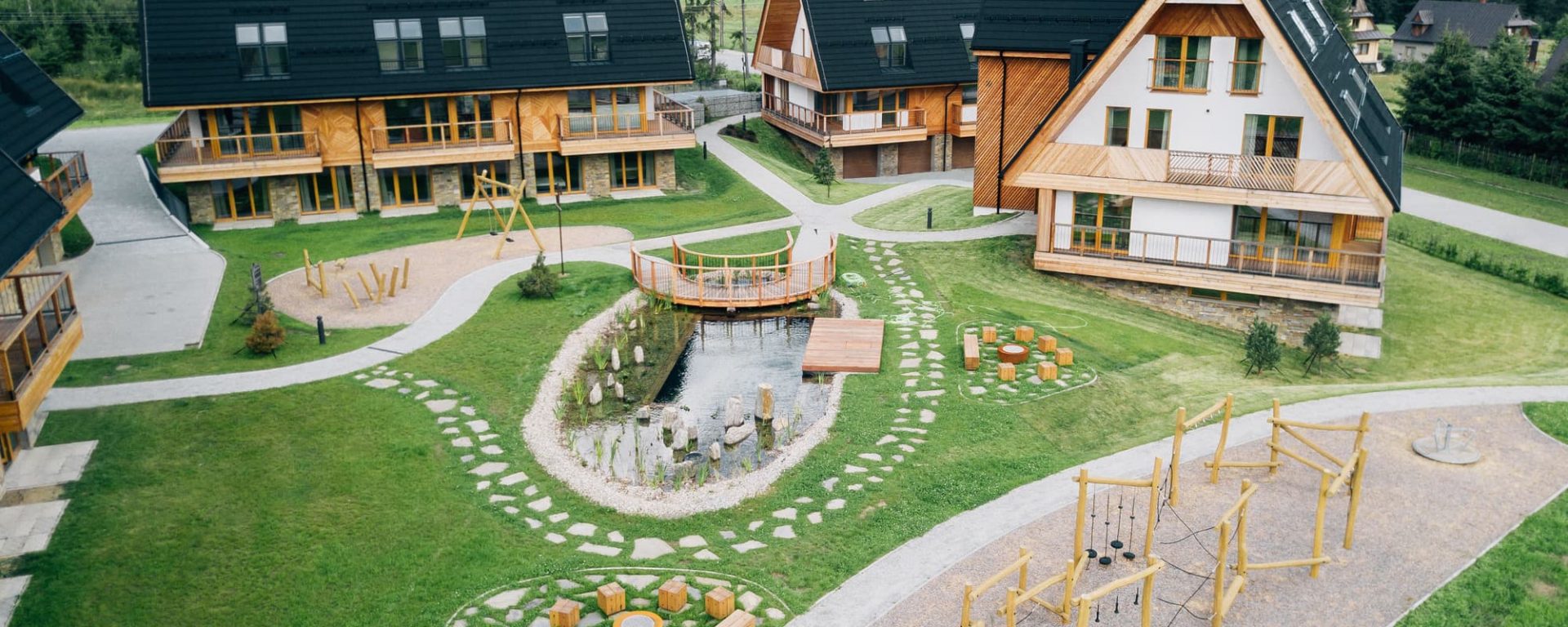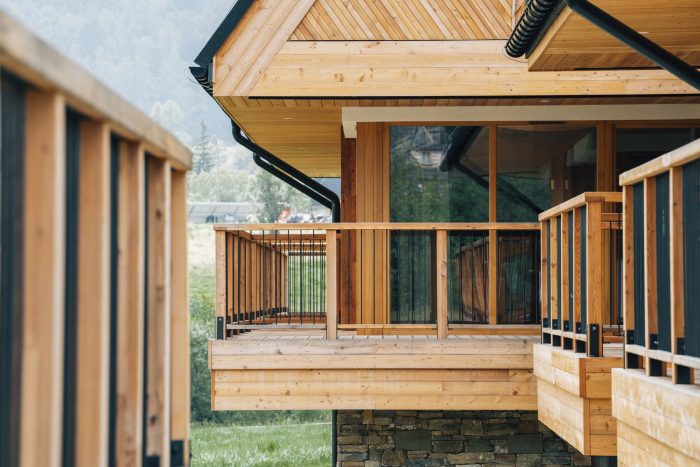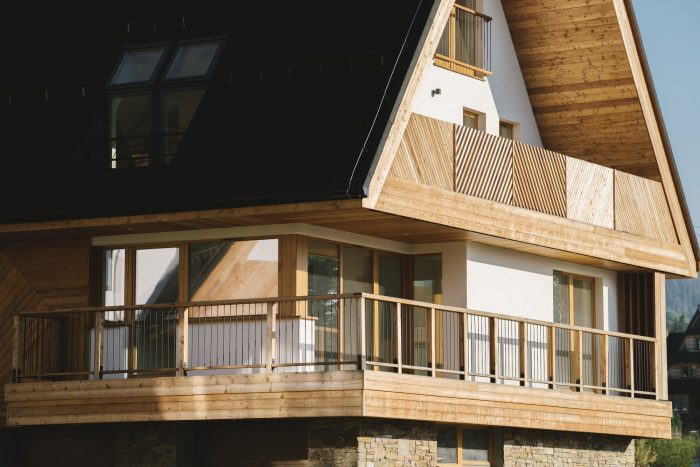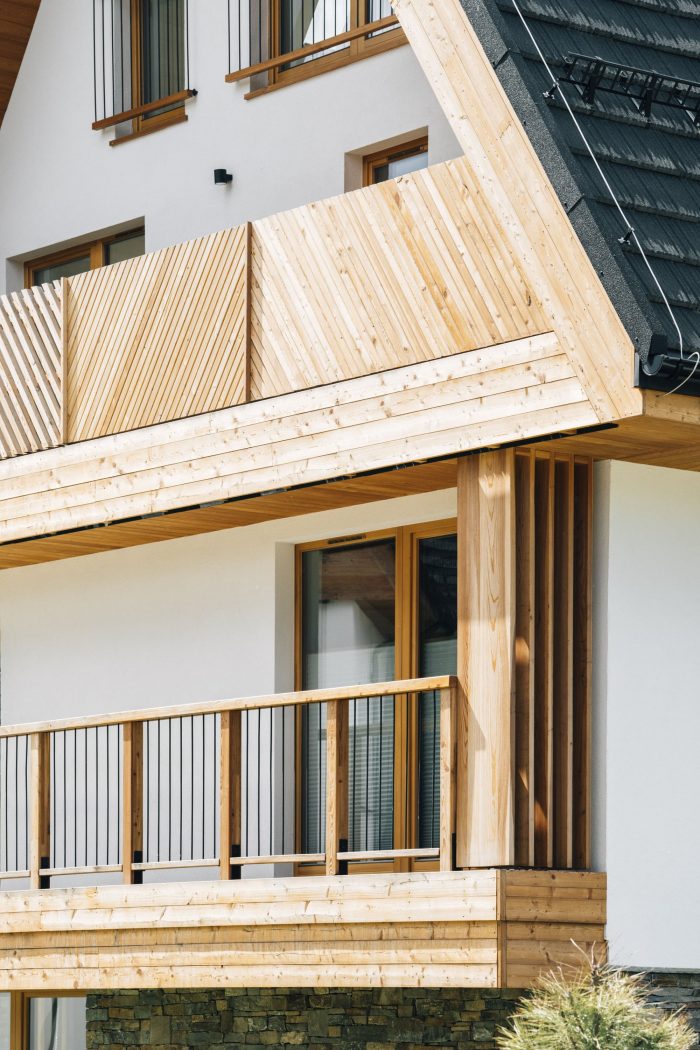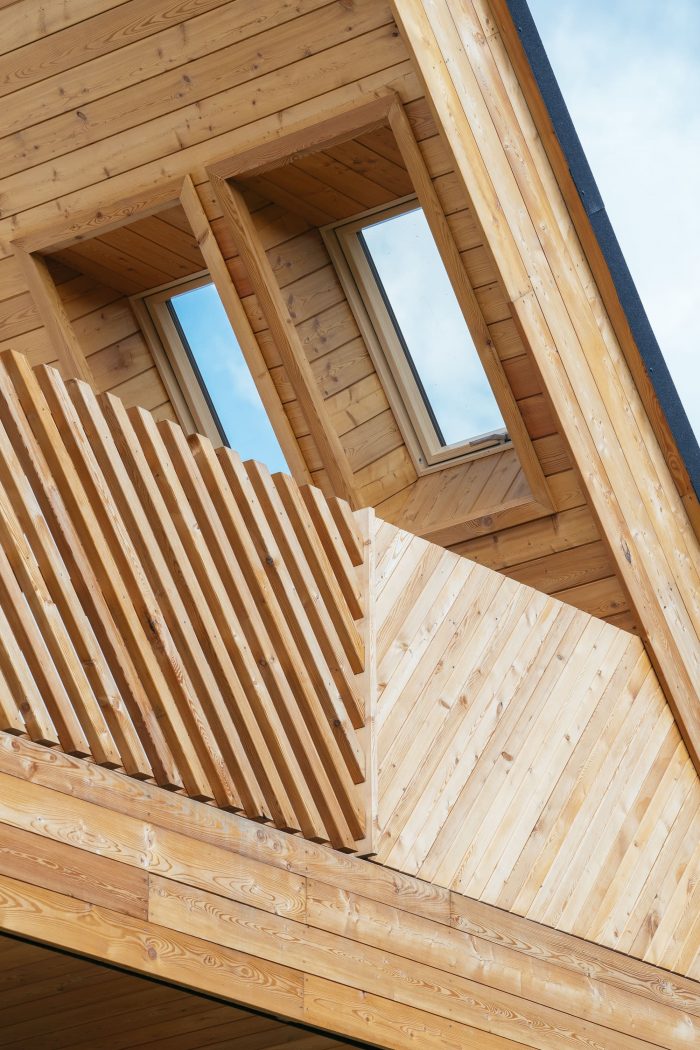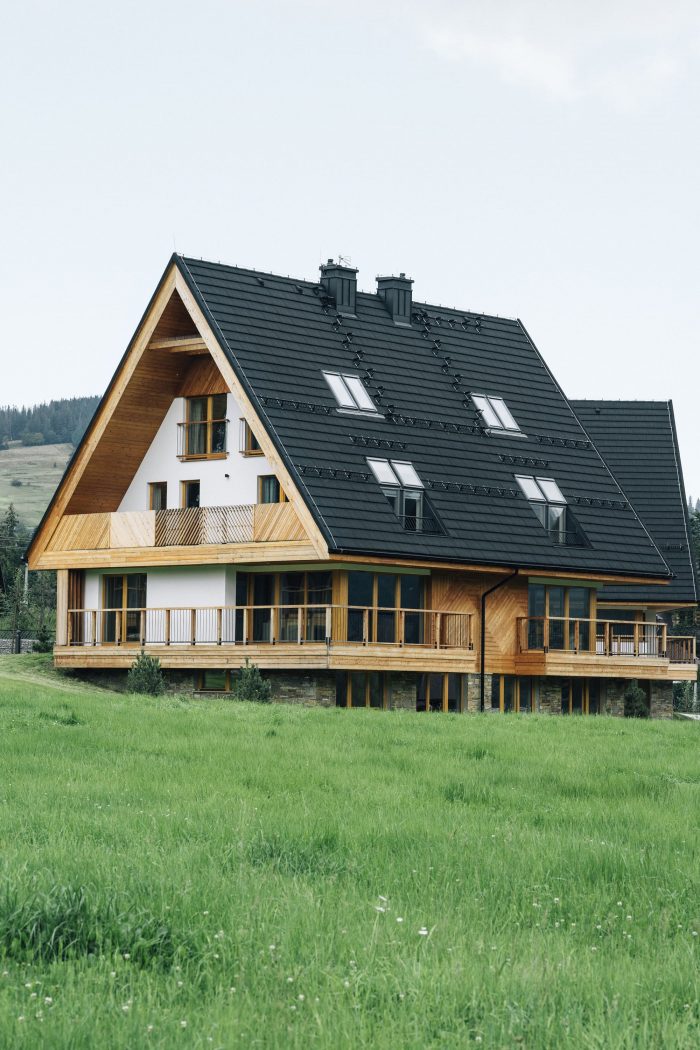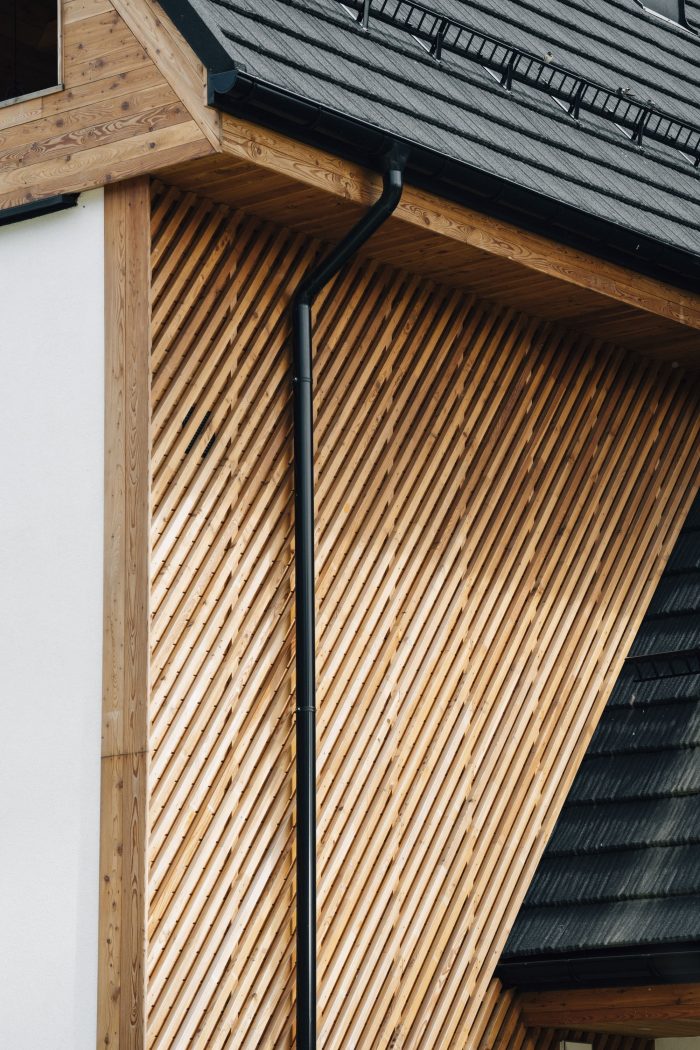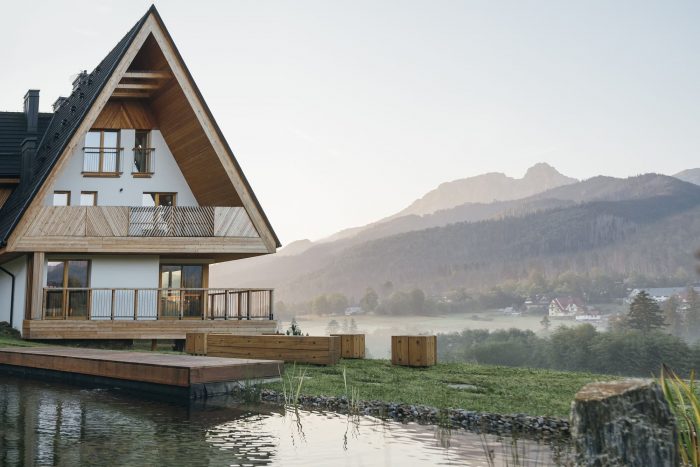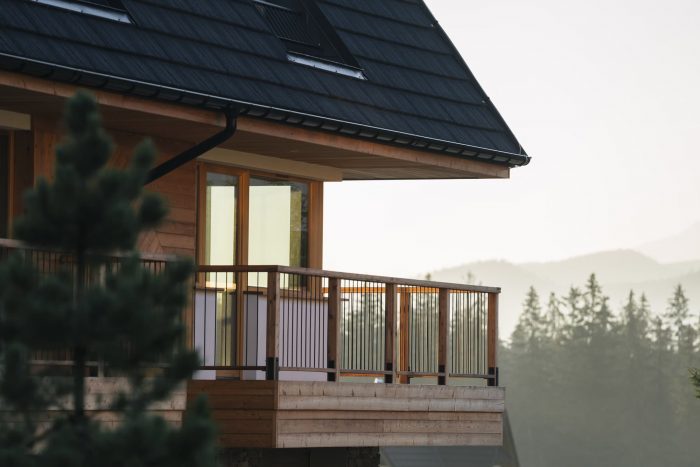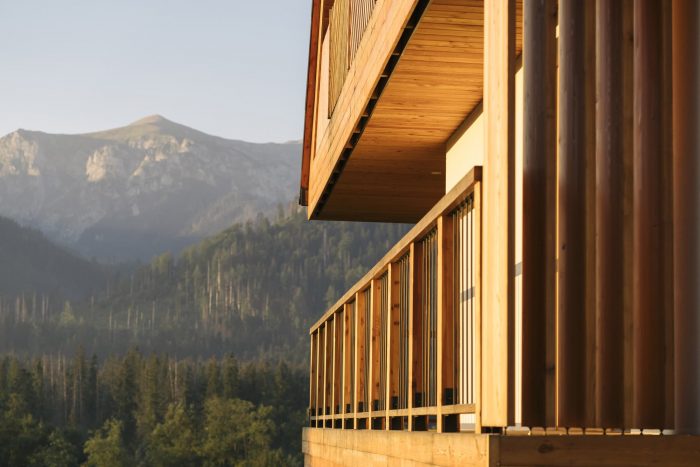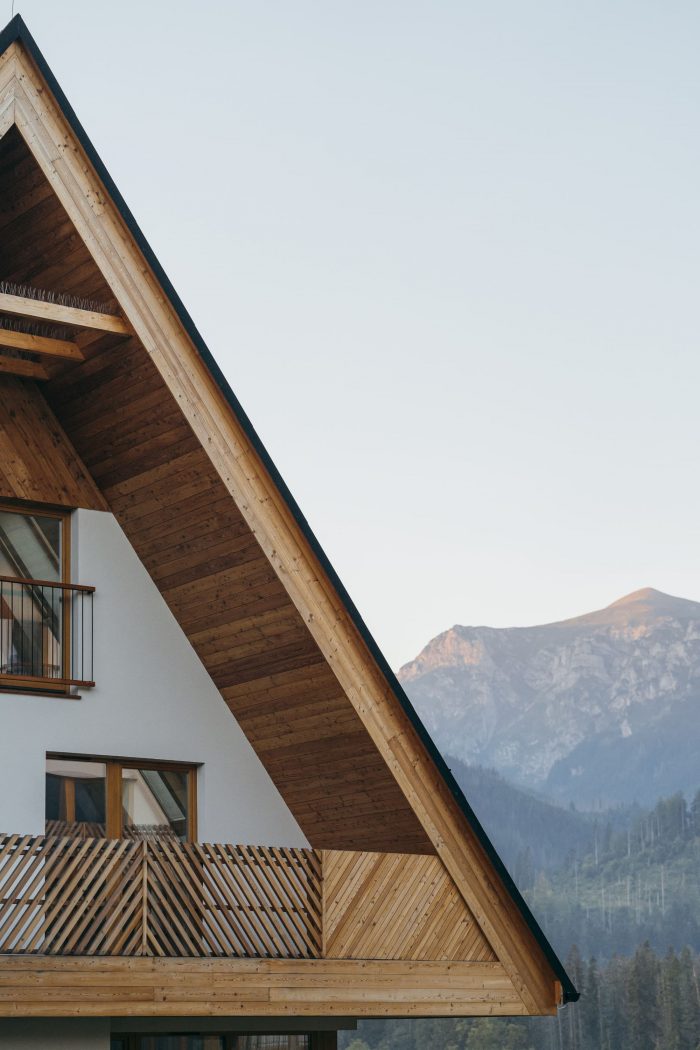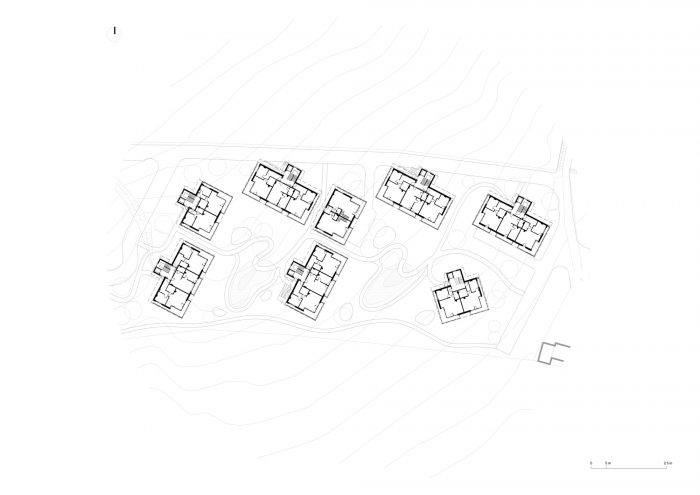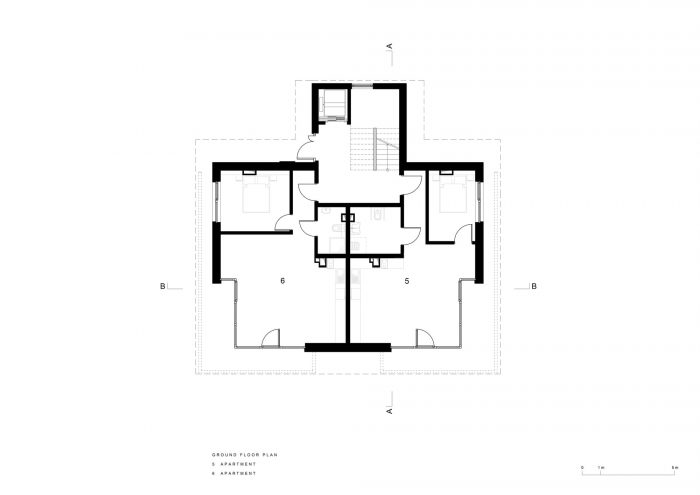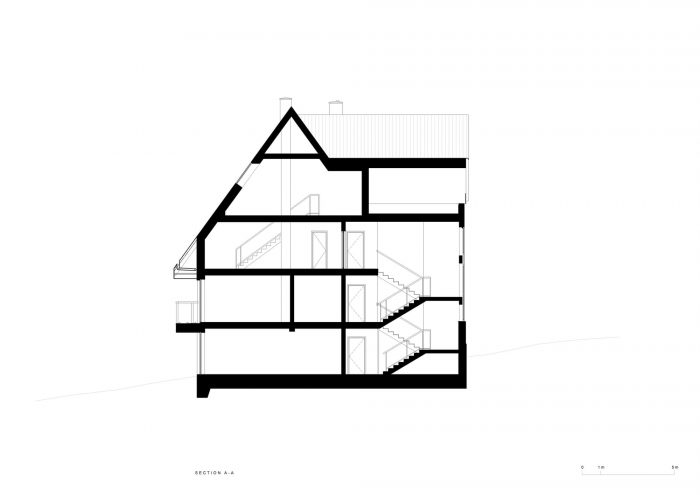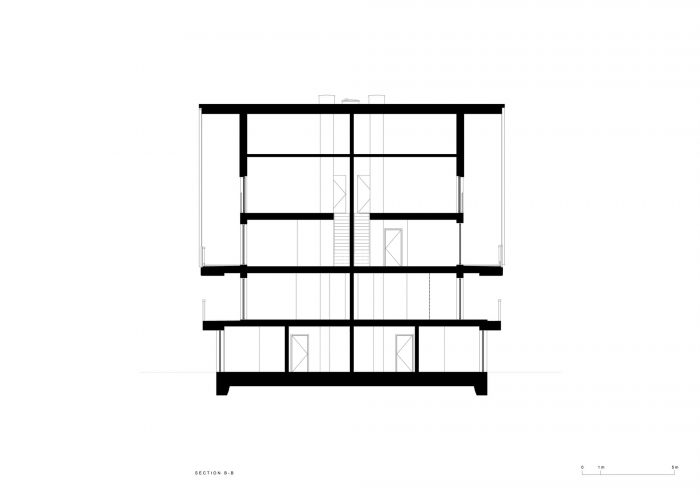该休闲建筑群位于塔特拉国家公园的缓冲区内,靠近Kościelisko山谷的入口。该地块向南倾斜,可以看到塔特拉山的全景,前景是盖翁山。投资的位置已经成为建筑以及功能和空间解决方案的灵感来源。
The complex of recreational buildings is located in the buffer zone of the Tatra National Park, near the entrance to the Kościelisko Valley. The plot, inclined towards the south, offers a panoramic view of the Tatra Mountains with the Giewont Mountain dominating in the foreground. The location of the investment has become an inspiration for architecture as well as for functional and spatial solutions.
八个休闲建筑被设计成分散的布局,具有农村建筑的特点。整个建筑群由一个软性的路径网络连接,其特征和表面参考了山间小路。独立设计的小建筑元素与娱乐和休息场所一起,没有栅栏,自然形状的绿色植物创造了一个有利于在大自然中度过的空间。
Eight recreational buildings are designed in a dispersed layout, characteristic of rural buildings. The whole complex is connected by a network of soft-shaped paths, which character and surfaces refer to mountain trails. Individually designed elements of small architecture along with places for recreation and rest, no fences, and naturally shaped greenery create a space conducive to spending time surrounded by nature.
该项目是基于可持续发展的原则。有限制能源消耗和污染物排放的应用解决方案,如可再生能源。该项目包括支持加热的光伏板、地面热泵和雨水再利用系统。
The project was based on the principles of sustainable development. There were applied solutions limiting energy consumption and pollutant emissions, such as renewable energy sources. The project includes photovoltaic panels supporting heating, ground heat pumps, and a rainwater reuse system.
建筑物的形式参考了Podhale的传统建筑,通过简单的形式给它一个现代的维度,使用高质量的当地材料和工艺,非常注重细节。
The form of the buildings refers to the traditional architecture of Podhale, giving it a modern dimension through a simple form, using high-quality local materials and workmanship with great attention to detail.
建筑物的结构已经通过关闭檐墙的屋檐而被简化,由于这种解决方案屋顶给人的印象是一个独立的形式漂浮在这些建筑物的地面上。突出屋檐深度的木质露台和屋顶体积创造了一个形式。
Buildings’ structures have been simplified by closing the eaves in gable walls and thanks to that solution roofs give the impression of a separate form floating above the ground floors of these buildings. Wooden terraces protruding to the depth of eaves and the roof volume create one form.
覆盖着温暖的白色石膏的墙壁与外墙的木质元素相对应,如栏杆、屋檐框架、窗户和门的细木结构或屋檐檐口。落叶松木板的装饰性、风格化的形式出现在房屋的外墙上,参考了谷仓和木屋墙壁上的装饰。
Walls covered with warm white plaster correspond to wooden elements of the facade, such as balustrades, gable frames, windows, and door joinery or eaves soffits. Decorative, stylized forms of larch boards appear on the facades of houses, referring to those found on walls of barns and wooden houses.
屋顶覆盖着模仿瓦片的黑色金属瓦片,由碎砂岩制成的石质地基切断了地面层。建筑物与周围的环境相适应,大面积的玻璃窗框住了最美丽的景色。
Roofs covered with black metal tiles imitating shingles, stone foundations made of broken sandstone cut off the ground floors. Buildings fit into the context of the surroundings, and large glazing frames the most beautiful views.
Architects: INDO Architekci
Area : 1749 m²
Year : 2022
Photographs :Bartek Pawlikowski
Manufacturers : KOMPAN, Kone
Lead Architects : Marcin Mikos, Jacek Michalik
Structure Engineers : GALISTRA
HVAC : Euros Energy
Author Cooperation : Wojciech Miętka
Architectural Assistant : Kinga Wojtanowska
Program / Use / Building Function : Hotel / Lodging / Hospitality Architecture
City : Kościelisko
Country : Poland

